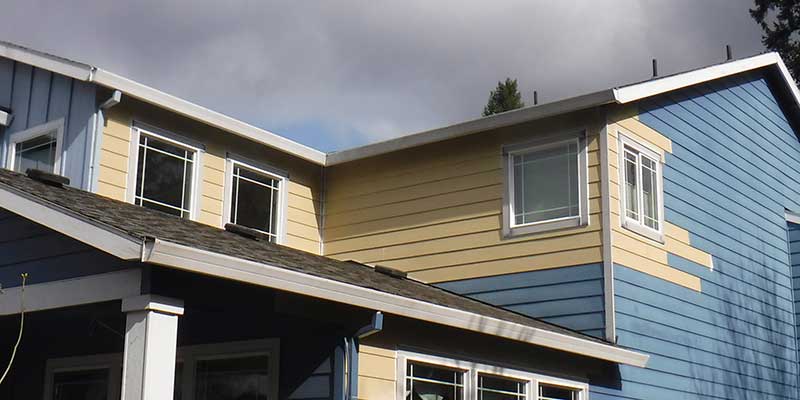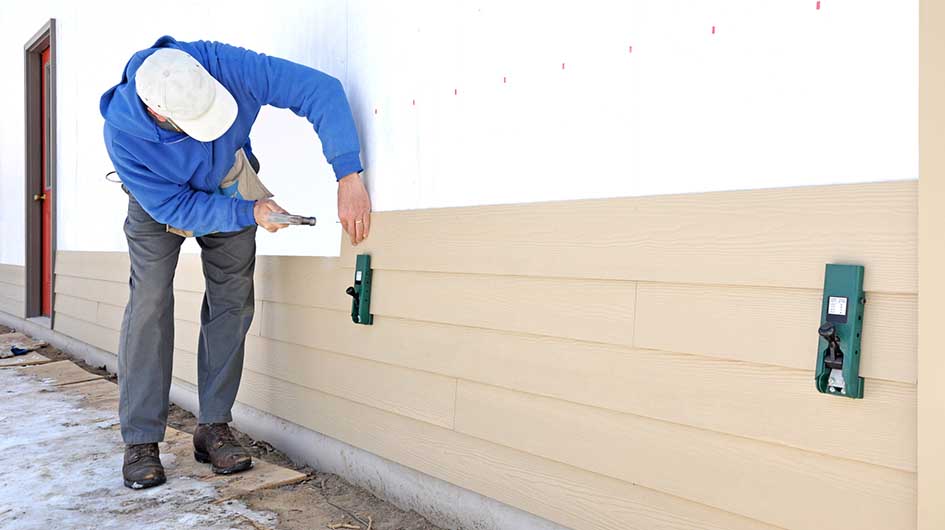Morris Siding Contractor with Years of Expertise in Home Exterior Upgrades
Morris Siding Contractor with Years of Expertise in Home Exterior Upgrades
Blog Article
The Important Guide to the Different Kinds Of Siding and Their Unique Benefits
In the world of home improvement, selecting the ideal house siding is an essential decision that affects both visual allure and functional performance. With so numerous choices to think about, which exterior siding product really stands out for your details project?
Timber Siding
Wood exterior siding, a popular option for residential outsides, offers a classic aesthetic that integrates natural charm with architectural honesty. This house siding material is offered in various designs, consisting of clapboard, roof shingles, and board-and-batten, allowing property owners to customize their façade to match their layout preferences. Wood exterior siding is usually crafted from sturdy varieties such as cedar, redwood, or pine, which are recognized for their durability and ability to hold up against environmental stress factors.
One of the key advantages of timber home siding is its outstanding insulation residential properties, which can contribute to power efficiency and reduced heating prices. Additionally, timber exterior siding is eco-friendly, making it an eco-friendly choice when sourced sustainably. Regular maintenance, consisting of painting or discoloration, can prolong its life-span and improve its appearance, enabling house owners to preserve the all-natural appeal of the wood.
Nonetheless, possible downsides include sensitivity to insects, rot, and climate damage, demanding sufficient treatment and upkeep - morris siding contractor. Despite these problems, when properly cared for, timber home siding can provide a beautiful and resilient option that boosts the character of a home while using a cozy, inviting environment

Plastic Home Siding
Plastic siding has arised as a leading option for property owners looking for a low-maintenance exterior alternative that integrates longevity and cost. This versatile product is crafted from polyvinyl chloride (PVC), making it resistant to various climate condition, consisting of wetness and UV rays. Consequently, plastic home siding does not warp, rot, or fade, ensuring durable visual charm.
One of the key advantages of vinyl house siding is its substantial variety of designs and colors, permitting property owners to attain the desired try to find their property without the need for regular repainting. In addition, vinyl home siding is easy to set up, which can substantially decrease labor expenses throughout building and construction or remodelling jobs.
Plastic siding also adds to energy effectiveness. Several options feature insulation backing, which enhances thermal performance, assisting to preserve comfy interior temperature levels and possibly decreasing power costs. Furthermore, its smooth surface helps with simple cleaning, needing just routine cleaning with a yard tube to get rid of dust and particles.
Fiber Cement House Siding
Fiber cement exterior siding has actually obtained traction among building contractors and homeowners alike because of its remarkable mix of sturdiness and visual convenience. Composed of a mixture of sand, concrete, and cellulose fibers, this home siding choice is crafted to hold up against extreme climate conditions, consisting of high winds, heavy rain, and temperature variations, making it a durable selection for residential outsides.

One of the main advantages of fiber cement siding is its resistance to insects, such as termites, and its non-combustible nature, offering improved fire security. morris siding contractor. In addition, it is offered in a broad range of shades, styles, and structures, enabling homeowners to accomplish their desired visual without sacrificing performance
One more advantage is its reduced upkeep demands; fiber cement exterior siding typically calls for paint or discoloration every 5-10 years, which is less constant than other products. Additionally, its longevity adds to a reduced total price of ownership, as it minimizes the need for regular repair work or replacements.
Eventually, fiber cement home siding represents an excellent investment for those looking for a resistant, appealing, and flexible outside option, incorporating both form and function to improve the home's aesthetic appeal.
Steel Exterior Siding
The click for more info allure of metal siding exists in its durable resilience and modern visual charm, making it a preferred option for contemporary design. Offered in materials such as light weight aluminum and steel, steel siding offers a range of coatings and colors, allowing house owners to attain an individualized look that matches their style vision.

Energy performance is an additional significant benefit, as several steel siding items are designed with insulation alternatives that aid manage interior temperature levels. This can result in lowered energy costs with time. Additionally, steel exterior siding is usually recyclable, making it an eco pleasant choice for sustainability-minded home owners.
The installation process for steel house siding can be reasonably straightforward, causing a quicker turnaround time for building and construction tasks. Generally, steel exterior siding integrates capability and style, making it a practical option for those seeking a aesthetically enticing and long-lasting outside coating.
Block and Stone Siding
Block and rock exterior siding attracts attention as a classic selection that boosts the visual beauty of any home. Understood for their toughness and low maintenance, these materials give a remarkable return on financial investment while raising the building's curb charm. Available in various shades, structures, and patterns, block and stone can be customized to match varied building designs, from typical to modern-day.
One of the primary benefits of block and rock house siding is their power efficiency. Both products possess all-natural insulating buildings that help control interior temperature levels, possibly lowering home heating and cooling expenses. In addition, they supply exceptional fire resistance compared to various other home siding alternatives, adding to enhanced security.
Another advantage is their long life. Brick and stone can last for years, often calling for minimal upkeep past occasional cleansing. Unlike timber siding, they are unsusceptible pests and rot, guaranteeing a durable outside that stands up to the aspects.
Conclusion
In summary, the selection of siding significantly influences a home's visual charm, energy performance, and upkeep needs. Each type of exterior siding-- whether timber, plastic, fiber cement, steel, or brick and rock-- uses distinct benefits customized to numerous property owner preferences and ecological problems.
One of the primary my explanation benefits of timber home siding is its exceptional insulation residential or commercial properties, which can contribute to energy effectiveness and lower heating expenses. Furthermore, wood house siding is eco-friendly, making it an ecologically friendly option when sourced sustainably.One of the main advantages of steel exterior siding is its resistance to different environmental elements.Power effectiveness is another substantial benefit, as lots of steel home siding products are made with insulation options that help manage interior temperatures. Each kind of exterior siding-- whether wood, vinyl, fiber steel, block, or concrete and stone-- uses distinct advantages customized to different homeowner choices and environmental conditions.
Report this page